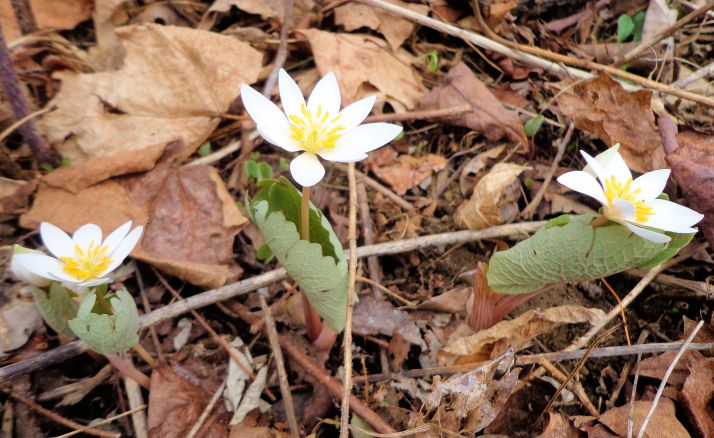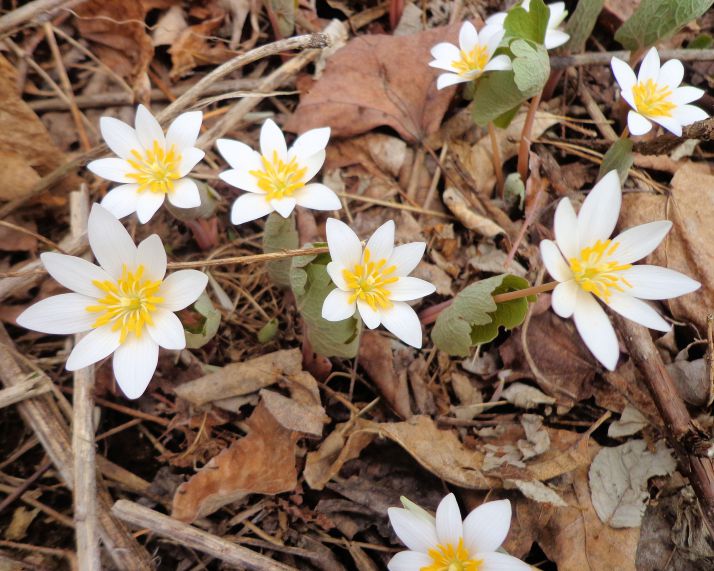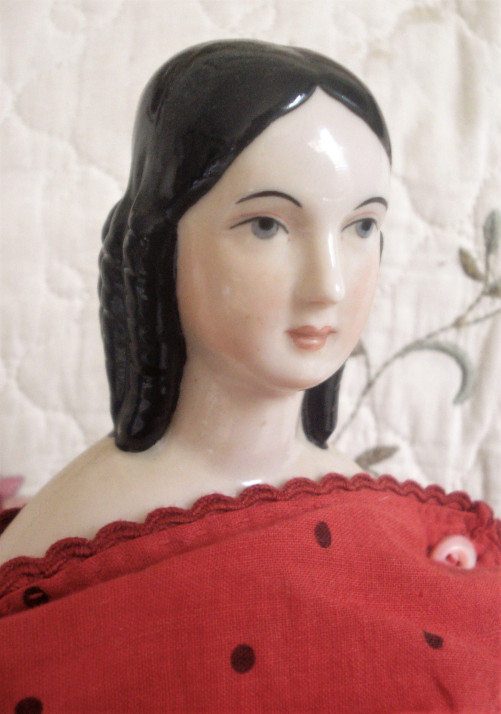
During a recent walk on our farm I found this patch of white flowers. The single leaf has a distinctive growth habit of wrapping around the flower stem. The early blooming spring plant is called bloodroot, Sanguinaria canadensis. It is native to northeastern North America. Bloodroot grows in moist to dry conditions, from woods to floodplains, in full sun to shade. I did not detect any fragrance in the flowers.
Bloodroot has a rhizome that grows close to the surface. It sends out shoots in early spring and is pollinated by bees and flies. The flowers produce pollen, but no nectar. The plant is spread by ants who carry the seeds away to their colonies to eat the attached elaoisomes. After the flower is pollinated and the petals drop, the leaf enlarges and unfurls. By the time the seeds develop, the leaves begin to yellow and die away. The plant then goes dormant until next spring.
Bloodroot earned its name from the bright red juice in the rhizome. When the root is damaged, it appears to bleed. Bloodroot is poisonous. The chemicals in the sap can burn the skin. In times of old, people used the juice to burn away warts and even cancer. It was a dangerous and somewhat ineffective treatment that often resulted in severe skin damage. The plant extract was also touted as a cure all and sometimes ingested. Its use has been linked to cancerous growth in the mouth due to skin damage.
So it is best to enjoy the fleeting beauty of bloodroot flowers from a distance. Do not pick or otherwise disturb this wild spring beauty.
Advertisements Share this:




